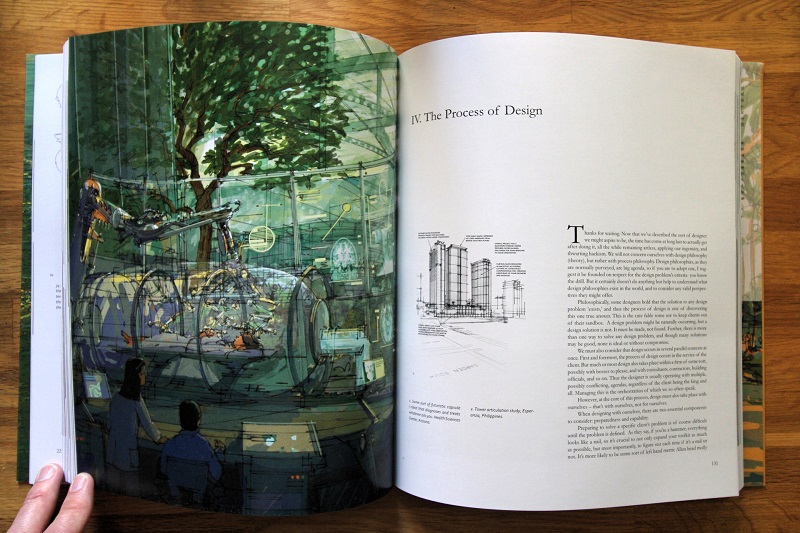The Nature of Design
The Nature of Design: Principles, Processes, and the Purview of the Architect
M. Scott Lockard
ORO Editions, May 2017

Paperback | 9-3/4 x 11-1/2 inches | 272 pages | English | ISBN: 978-1939621429 | $39.95
Publisher Description:




Author Bio:
(Note: Books bought via these links send a few cents to this blog, keeping it afloat.)




M. Scott Lockard
ORO Editions, May 2017

Paperback | 9-3/4 x 11-1/2 inches | 272 pages | English | ISBN: 978-1939621429 | $39.95
Publisher Description:
In this insightful, irreverent, and beautiful exposition of the design process, one of the world’s most prolific practitioners proposes an absolutely clear distinction between Design and Art.dDAB Commentary:
Lockard asserts that the design profession itself accepts and often promotes a misleading definition of design, and here challenges professionals, their clients, and students of design to examine the fundamental nature of the discipline.
Conversational yet uncompromising in its message—illustrated throughout by hundreds of actual design drawings from real-world projects of all types demonstrating Lockard’s highly effective and versatile process—the book’s overarching principles will find application in all fields of design.
The Nature of Design also offers compelling insight into today’s biggest challenges for the field of design: the co-opting of the process by bureaucratic and industry forces, the disconnection of academia from practice, and the very real difficulties facing designers that encourage brain drain to related fields.
Today the AIA Conference on Architecture gets underway in Las Vegas. While I'm not attending the annual event hosted by the American Institute of Architects, I've been to many of them in the past, including last year's in New York City. One thing the Conferences do, among many other things, is reorient my writing (as least temporarily) on this blog and at World-Architects from an emphasis on big names and high-profile commissions to more run-of-the-mill projects by the majority of the profession: architects who don't get the exposure of the Bjarke Ingelses and Daniel Libeskinds. AIA does draw some big names, but most of the Conference — presenters and attendees, both — is made up of relatively unknown architects who design, detail, and manage building projects. I'm thinking of these experiences now because M. Scott Lockard wants, with The Nature of Design, to reorient architects away from heroic starchitecture and toward improving the design process of architects interested in pleasing their clients.Spreads:
Lockard spells out his position early and consistently throughout the book. It boils down to two points: "The designer's job is to serve the client," and "Design is not art." This is architecture as a service profession, one that serves the client: the person or company who owns the land, develops the program, takes the financial risks, and pays the architect. Those interested in architecture in service of society or of the environment need to look elsewhere. Furthermore, those interested in architectural aesthetics or, more accurately, architecture as a functional art, will probably find the book lacking. A look at the spreads below gives a clear indication of the types of designs — done by Lockard with and for various architecture firms— that permeate the book.
Lockard argues for a particular way of designing — one based on a clear prepare-propose-evaluate-repeat process and the use of analogies (stories) rather than a reliance on forms or effects — across seven chapters, ranging from the nature of design and designers to the process of design, style, and the profession. His conversational, sometimes humorous yet occasionally arrogant writing is accompanied by abundant illustrations: drawings and renderings that tend to number a few to a page. Though I can't help but wonder if Lockard's argument is aided or hindered by these images. They exhibit a skilled, consistent hand that goes along with the consistent voice of the text, but after a while the aerial renderings punctuated by spotlights and perspectival scenes populated by dozens of people (there is a clear focus on hospitality and entertainment typologies in his work) blur together. Furthermore, in most chapters the images are separate from rather than aligned with the text; an intentional integration (which happens in the process chapter) would have helped strengthen Lockard's argument. Instead, the images distract from Lockard's text, signaling the outcome of the design process before any architect interested in his approach has been able to digest it.




Author Bio:
In more than three decades of architectural practice, M. Scott Lockard—the son of revered architectural educator W. Kirby Lockard—has had a hand in the design of projects of nearly every scale and type, in all phases of design, and on every continent. Beyond his own practice, Lockard has collaborated with more than seventy-five design firms, and thus has a unique and extremely realistic perspective on the practice of design today. His design and architecture firm, Lockard Creative, is located in Kentfield, California, just north of San Francisco.Purchase Links:
(Note: Books bought via these links send a few cents to this blog, keeping it afloat.)



